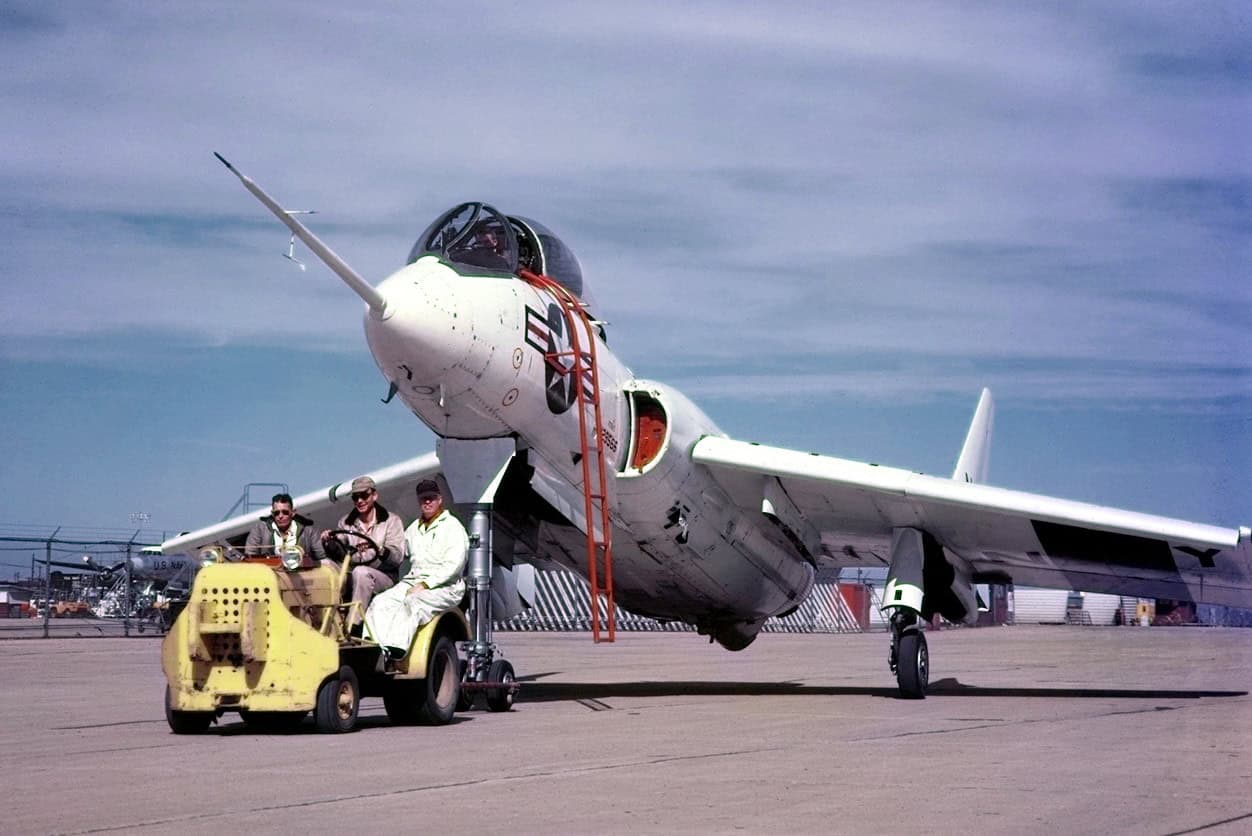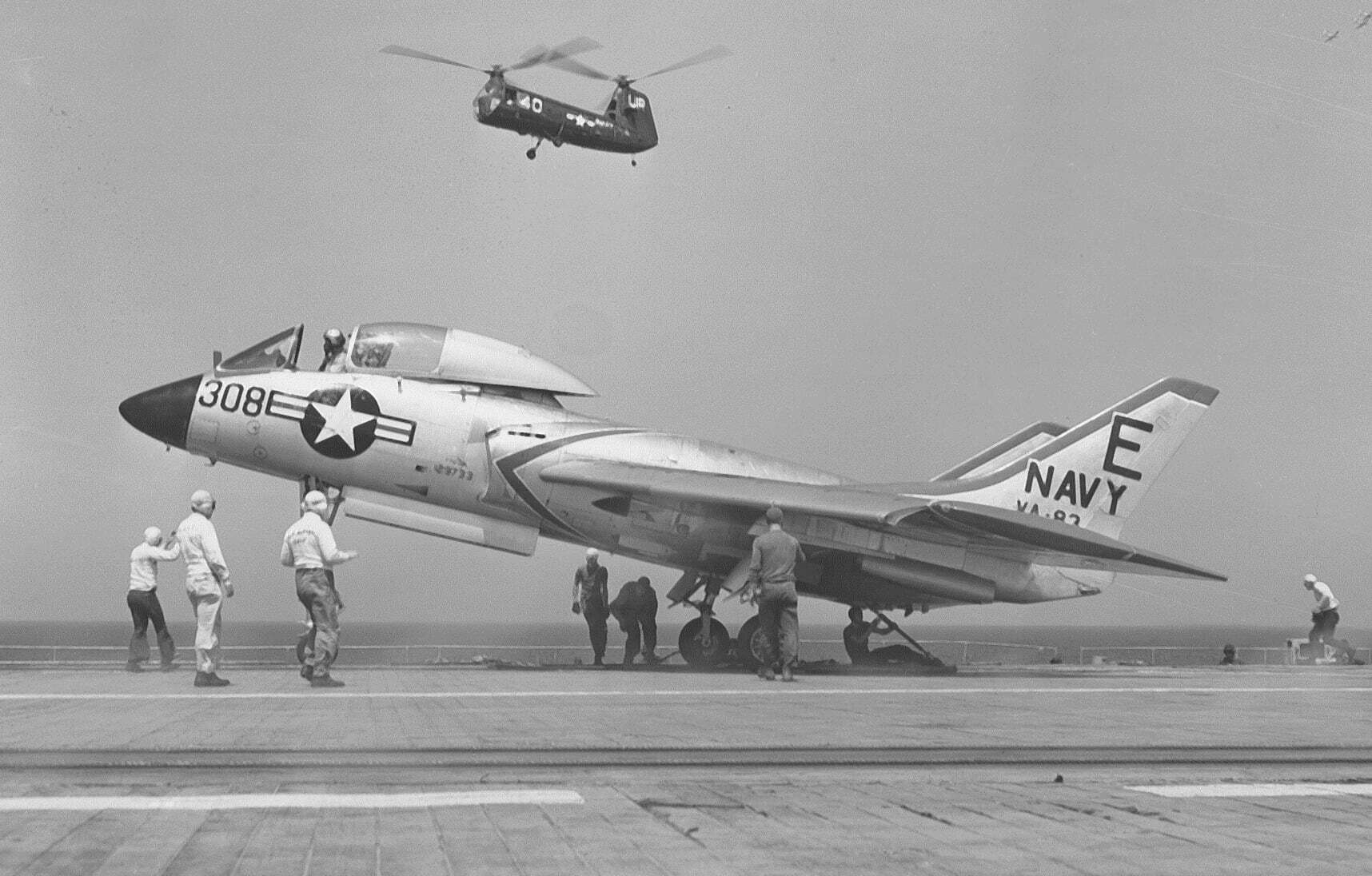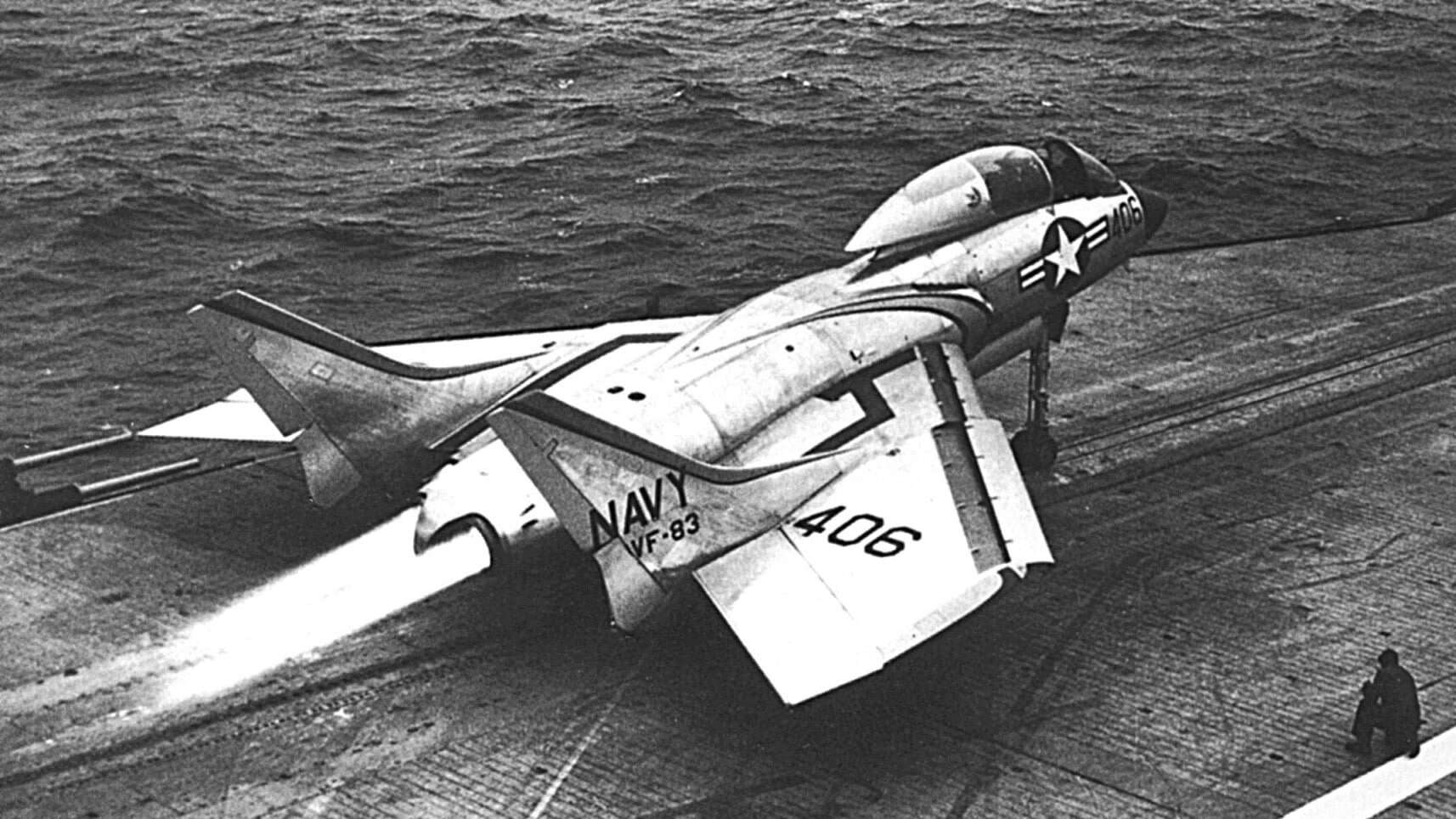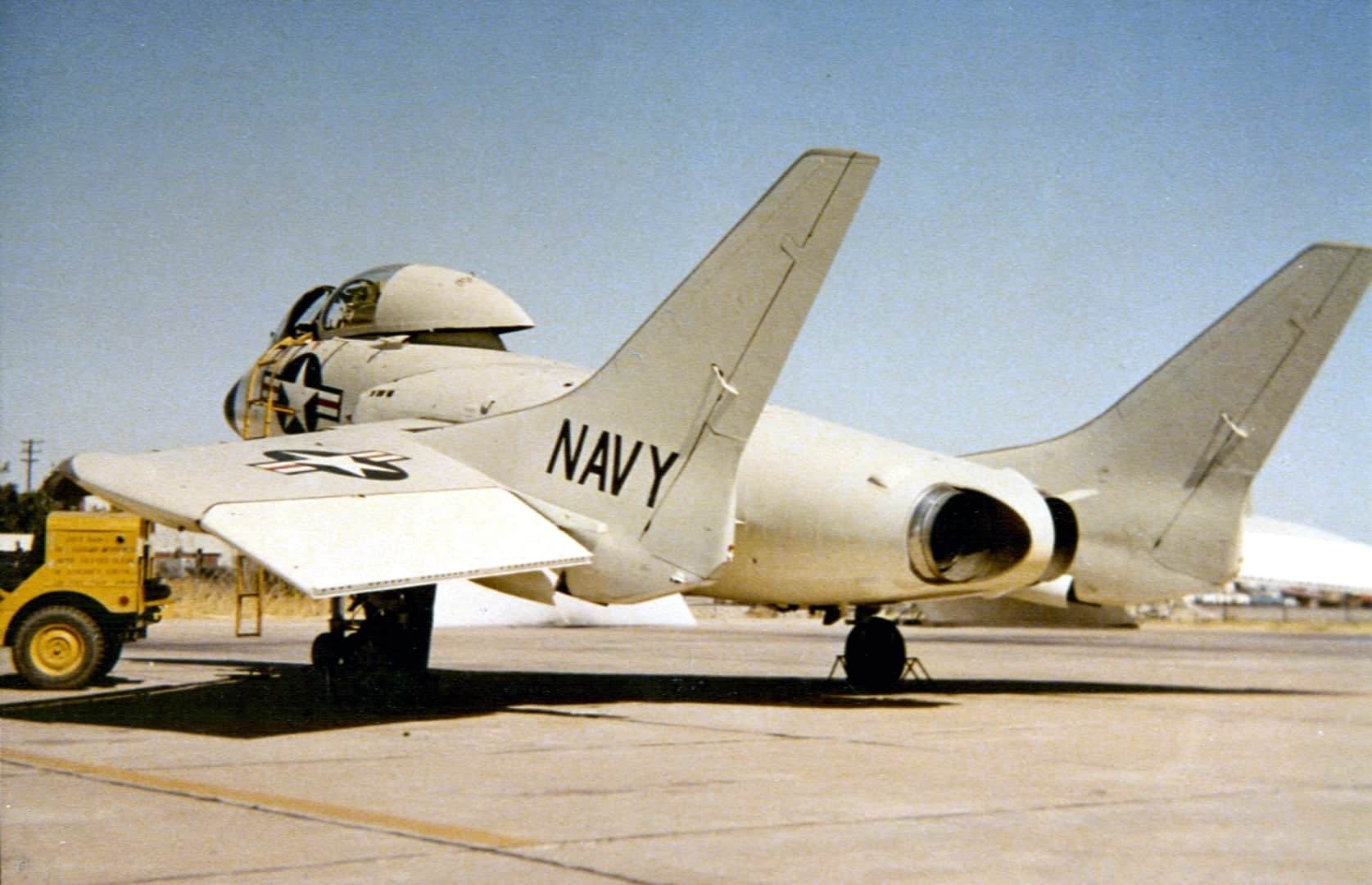Unbreakable But Notorious
It wasn’t all bad, though. F7U-3 Cutlass pilots reported that the aircraft had a high roll rate of 570 degrees per second—three times that of any other fighter at the time. The strengthened F7U-3 airframe was considered to be “unbreakable.”
Evidently, when the F7U Cutlass wasn’t trying to kill the Naval Aviators at the controls, the jet was fun to fly and even “nimble.” It was found to be a stable bombing platform. But the jet was always a maintenance nightmare. No pilot ever signed off on a clean Cutlass post-flight gripe sheet.

Finding Work the F7U Cutlass Could Do
12 Cutlass airframes were adapted for photographic reconnaissance work and given the designation F7U-3P but the camera carriers never saw operational service. A ground attack version, designated A2U-1, picked up some steam but an order for about 200 of them was cancelled after the accident rate went through the roof.
The F7U-3M was capable of employing up to four Raytheon AAM-N-2 Sparrow beam-riding guided missiles. A total of 98 F7U-3Ms were built or upgraded. VA-83 Roaring Bulls became the first Navy squadron to deploy with guided missile capability in 1956; however, an order for 202 more F7U-3Ms was subsequently canceled.

The F7U Cutlass Was Ahead of Its Time In More Ways Than One
Vought built a total of 320 Cutlasses (all variants). Few were flown operationally or on deployments for long before the squadrons grounded them or put them ashore for any number of faults. F7Us ended up with one of the worst safety records ever seen in Naval Aviation. Cutlasses were the cause of four test pilot deaths and the loss of a total of 21 other Naval Aviators.
More than 25 percent of all operational Cutlasses were lost to accidents. F7Us accumulated some 55,000 hours of flight time with 78 accidents. The advanced design of the type was never fully sorted out, and the lack of thrust or even reliability of the F7U’s engines caused many of the losses.

Another F7U Cutlass Bites the Dust
Perhaps the most famous Cutlass mishap occurred on July 14th 1955 aboard the aircraft carrier USS Hancock (CVA-19). Lieutenant Commander Jay T. Alkire, who was at the time the executive officer of VF-124 Stingrays, settled in close drifting left and was unable to gain sufficient engine thrust to clear the round down at the end of the flight deck- the ramp.
LCDR Alkire was flying BuNo 129595, side number 412, when he was killed in the mishap. Incredibly, although it is often claimed that two aviation boatswains’ mates and a photographer’s mate working near the landing area at the time of the mishap were also killed, other evidence suggests only assorted injuries occurred among the deck crew.

Had a Cup of Coffee With the Blue Angels
The Navy’s Blue Angels flew a pair of Cutlasses for a portion of their 1953 show season as sort of a side attraction. The Team was flying the comparatively stodgy Grumman F9F-5 Panther at the time. The futuristic appearance of the design (and, brother, it certainly looked futuristic!) made the Blue Angels Cutlass dalliance work for a short while, but a series of non-fatal, though serious mishaps caused the Blues to drop their Cutlasses off at NATC Memphis, where they became maintenance instructional airframes —a fitting end for them.

Reputation Saved By the Next-Generation Vought Fighter
Fortunately for Vought, the F8U Crusader was in the design pipeline well before the F7U-3 became operational with the Navy. If that had not been the case, the company might well have gone completely out of business after the bath they took with the F7U.
The last operational Cutlasses were gone from the Navy by the end of November 1957. But there is a happy ending here. The F7U Cutlass inspired both a car (the Oldsmobile) and a hood ornament (found on 1955 and 1956 Chevrolet Bel-Air sedans). And the Crusader…well, that’s a much better story!


[…] had a hump that would make a Beluga whale jealous. It was synonymous with two unfortunate features, including being underpowered compared to other jets, and the landing gear door tended to fall off. Both made […]
Only LCDR Jay Alkire died as a result of this accident as he attempted to bring his aircraft aboard Hancock. He was the XO of VF-124 Stingarees, (not Stingarays). LCDR Alkire was the only fatality caused by this accident.